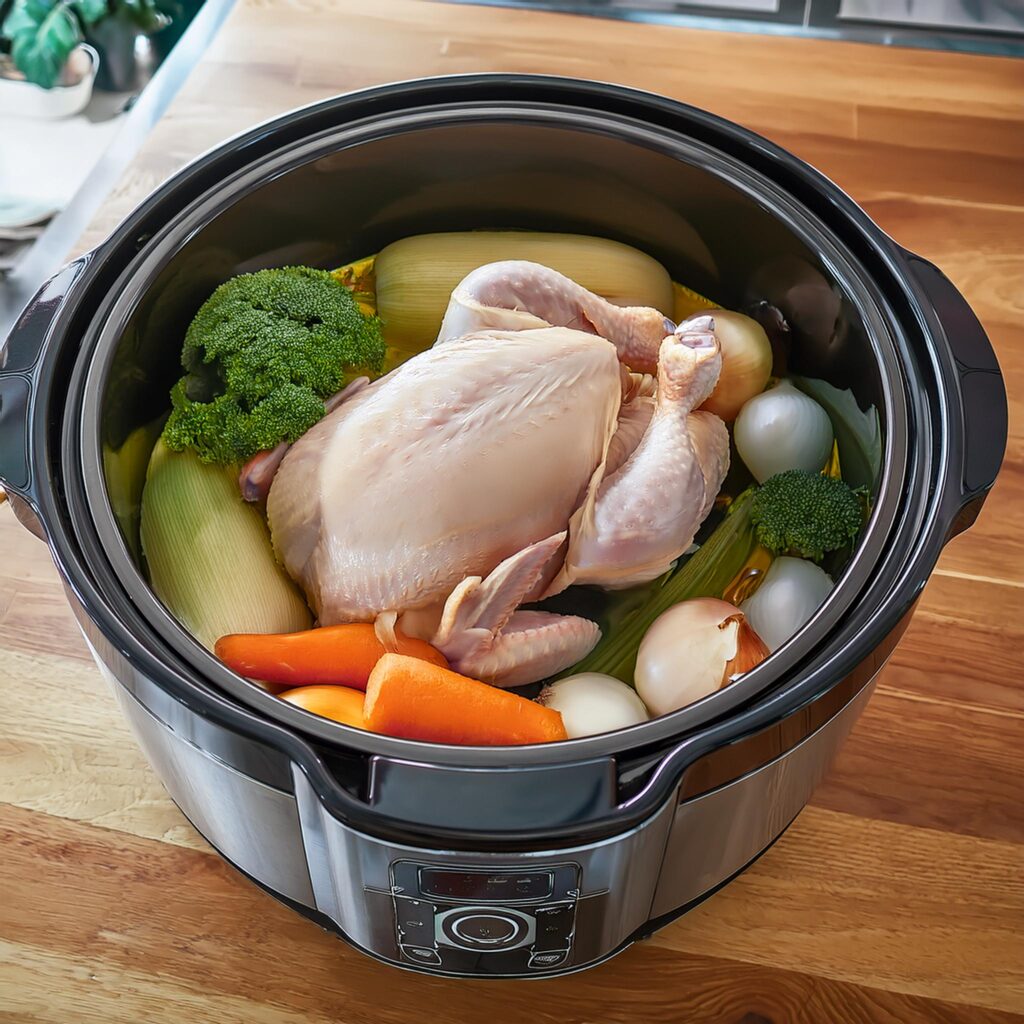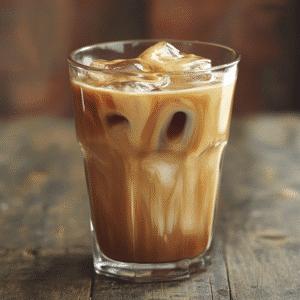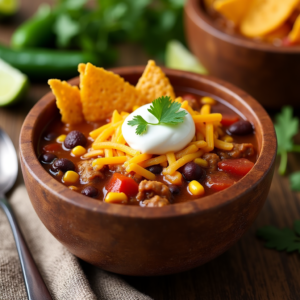Is it better to cook chicken on high or low in a slow cooker? That question stirred up more debates in our kitchen than whether cornbread needs sugar. Back when I was just a kid, I remember Mama’s slow cooker bubbling away all day while she hummed Patsy Cline and made sweet tea. Her chicken always came out tender, full of flavor, never dry. But these days, folks want to cut time. So the real question is—does speeding it up on high ruin the bird? Or can it still turn out tasty? Let’s dive in and answer it the only way we know how—through real cooking.
Is It Better to Cook Chicken on High or Low in a Slow Cooker? What Every Home Cook Needs to Know
Low Heat, Big Flavor: Why Patience Pays Off
Is it better to cook chicken on high or low in a slow cooker? Most old-school cooks will tell you: low and slow wins the flavor game. Cooking chicken on low for 6 to 8 hours lets the juices stay locked in and gives the connective tissue time to break down. That means tender meat that falls apart with a fork. Whether you’re cooking drumsticks or thighs, low heat works especially well with dark meat.
In our Slow Cooker Chicken Tacos recipe, for instance, we always recommend the low setting to make sure the spices sink into every bite. Same goes for dishes with thicker sauces like Slow Cooker Chicken Alfredo, where you want the flavors to mellow over time instead of getting scorched by quick heat.
Low heat also gives you more forgiveness. Run late from work? No problem. The chicken won’t overcook quickly. That kind of flexibility is gold in a busy kitchen.
High Heat: When Time’s Tight, Here’s What Works
Using the high setting isn’t wrong—it just needs more attention. Cooking chicken on high usually takes 3 to 4 hours, which is great when you’re short on time. But the faster process can lead to dry meat, especially with chicken breasts.
To avoid that, make sure your chicken is swimming in enough liquid—like broth, sauce, or even diced tomatoes. In our Crockpot Chicken and Dumplings recipe, the high setting works because the creamy soup base keeps the meat tender. And we always suggest checking internal temp around the 3-hour mark. Once it hits 165°F, it’s done.
If you’re working with boneless, skinless cuts, add a bit of fat (like butter or olive oil) and keep that lid on tight. It traps steam and helps maintain moisture.
How Does a Slow Cooker Work?
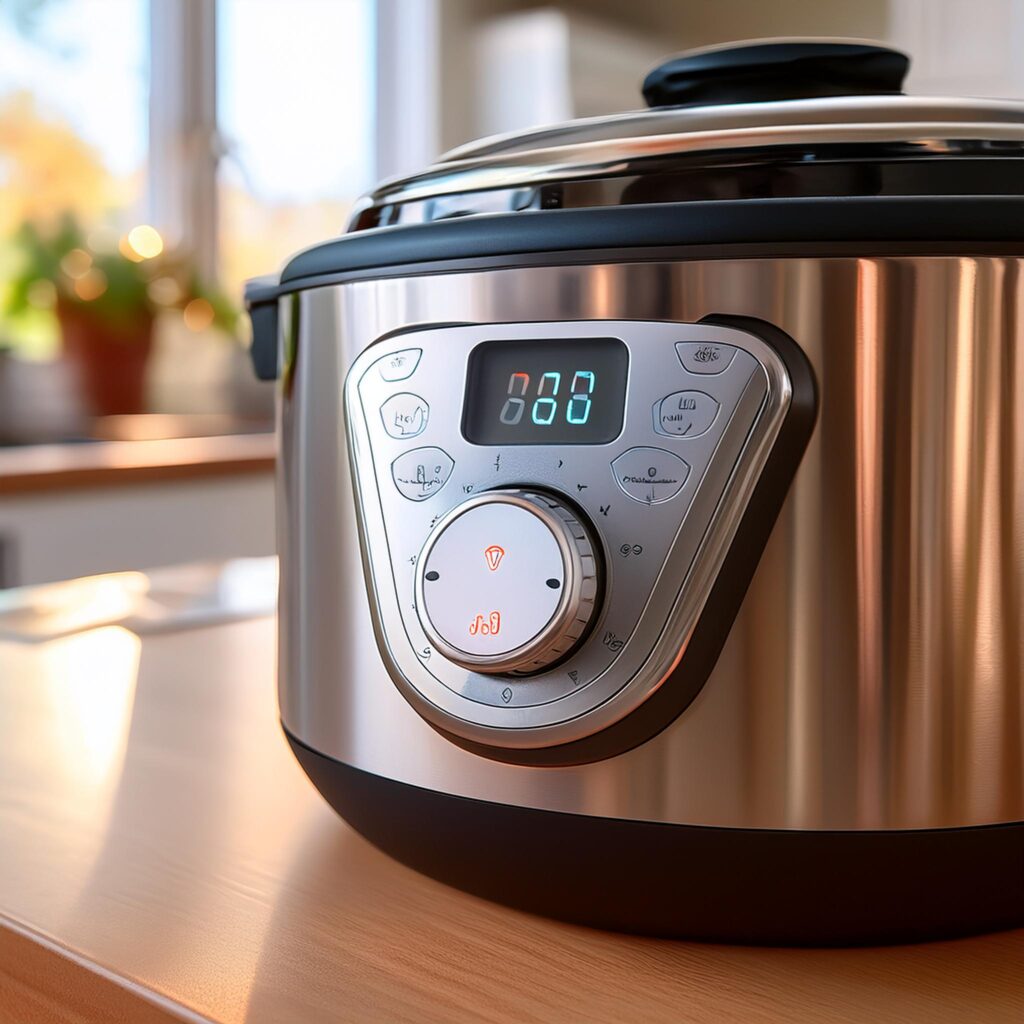
Understanding how a slow cooker operates is key to deciding whether to cook chicken on high or low. Both settings achieve the same end result but differ in how they get there.
The Basics of Slow Cooker Settings
Slow cookers have two main settings:
- Low Setting: Cooks at a lower temperature, usually around 190°F (88°C). It takes longer to reach the desired internal temperature but allows for more gradual cooking.
- High Setting: Heats food to the same maximum temperature as the low setting but at a faster rate, typically around 300°F (149°C).
Both settings eventually cook food to the same level, but the low setting provides more time for flavors to develop and for tougher proteins to break down.
How These Settings Impact Chicken
Low Setting:
- Tenderness: The slow, gentle heat is ideal for retaining moisture and creating tender, juicy chicken.
- Flavor Development: Allows herbs, spices, and sauces to infuse deeply into the chicken.
- Best For: Bone-in chicken, chicken thighs, or recipes requiring longer cooking times, such as soups and stews.
High Setting:
- Faster Cooking: Saves time by reducing cooking duration.
- Risk of Dryness: Lean cuts, like chicken breasts, are more likely to dry out when cooked quickly on high.
- Best For: Boneless cuts, recipes requiring shredded chicken, or when you’re short on time.
s It Better to Cook Chicken on High or Low?
The choice between high and low settings depends on the type of chicken and the dish you’re preparing. Let’s explore the pros and cons of each option.
Cooking Chicken on High
Pros:
- Faster cooking, ideal for busy schedules.
- Suitable for boneless cuts that cook quickly.
- Works well for recipes where the chicken will be shredded, as moisture loss is less noticeable.
Cons:
- Higher risk of overcooking, especially with lean chicken breasts.
- Less time for flavors to meld and develop fully.
Best Scenarios:
- Shredded chicken for tacos, sandwiches, or casseroles.
- Quick soups and stews when you’re short on time.
Cooking Chicken on Low
Pros:
- Produces tender, juicy chicken by allowing it to cook slowly.
- Enhances flavor as the ingredients have more time to blend.
- Ideal for bone-in chicken and hearty recipes like stews.
Cons:
- Requires more time, which may not always be convenient.
- Overcooking can still occur if left for too long.
Best Scenarios:
- Whole chickens, thighs, or drumsticks.
- Recipes with rich, slow-cooked sauces or broths.
By understanding how slow cooker settings affect chicken, you can tailor your cooking to achieve the best possible results for your meal.
Factors to Consider When Choosing High or Low
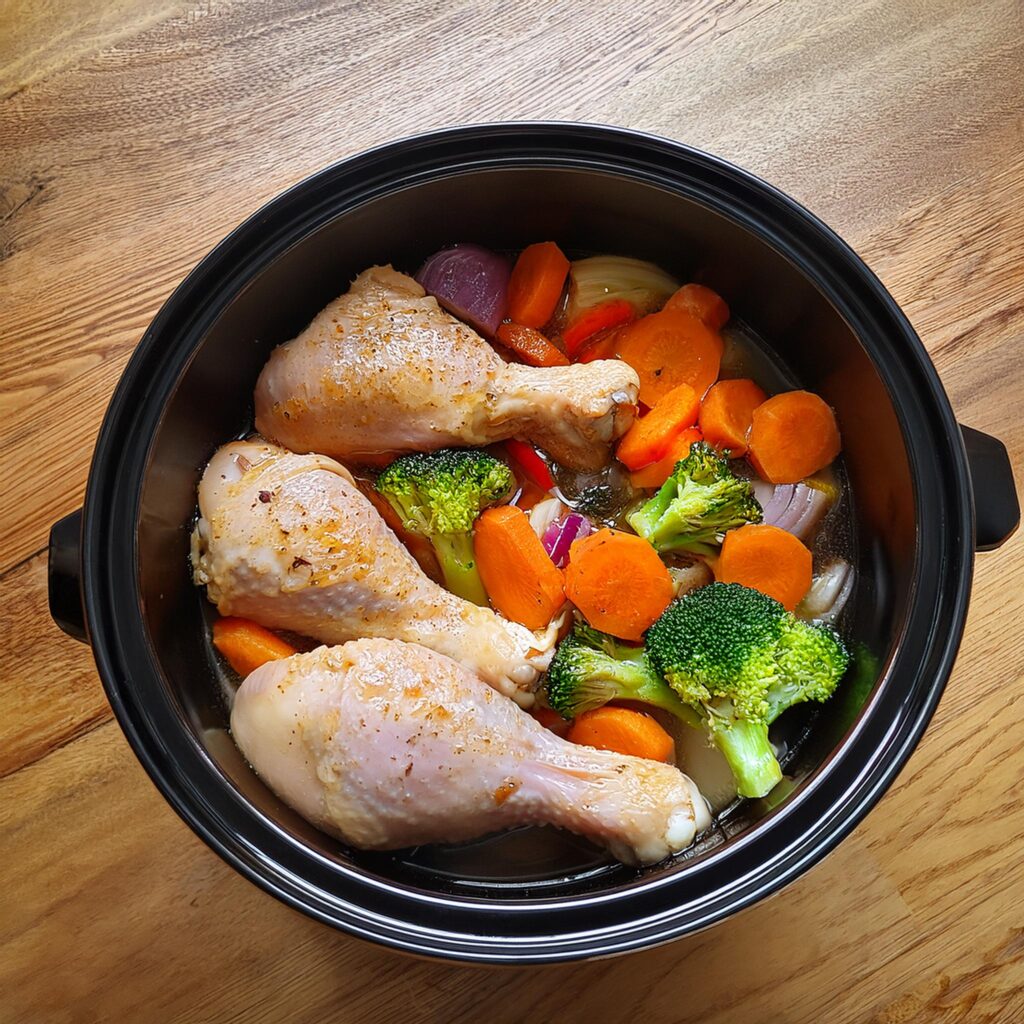
When deciding whether to cook chicken on high or low in a slow cooker, several factors come into play. These include the type of chicken, the recipe’s requirements, and the time you have available.
Type of Chicken
Bone-In vs. Boneless
- Bone-In Chicken: Best cooked on low to ensure even cooking and tender meat that falls off the bone. The slower process allows connective tissues to break down, enriching the flavor.
- Boneless Chicken: Can be cooked on high for faster results. However, leaner cuts like chicken breasts should be monitored closely to prevent drying out.
Whole Chicken
Cooking a whole chicken in a slow cooker is ideal on the low setting. This allows the meat to cook evenly while retaining moisture and ensures the rich flavors of the broth or seasonings penetrate fully.
Skin-On vs. Skinless
- Skin-On Chicken: Slow cooking on low helps the fat in the skin render gradually, keeping the meat juicy. For crispy skin, you can finish the chicken under a broiler after cooking.
- Skinless Chicken: Works well on high if time is limited. Adding a sauce or broth prevents the chicken from drying out.
Recipe Requirements
Some recipes are better suited for one setting over the other:
- Rich Stews or Curries: Low setting is best to allow spices and flavors to meld together over time.
- Shredded Chicken: High setting works well since the chicken will be broken down and mixed with sauce or broth.
- Layered Dishes: If your recipe involves layering ingredients, like chicken with vegetables or rice, the low setting ensures even cooking.
Time Available
Short on Time:
If you have just 3–4 hours to cook, the high setting can produce good results for simple dishes like shredded chicken or soups.
No Rush:
For meals planned in advance, cooking on low for 6–8 hours is the better choice. It enhances tenderness and flavor while requiring minimal attention.
By considering the type of chicken, recipe, and time, you can choose the optimal slow cooker setting to achieve delicious results every time.
Tips for Perfectly Cooked Chicken in a Slow Cooker
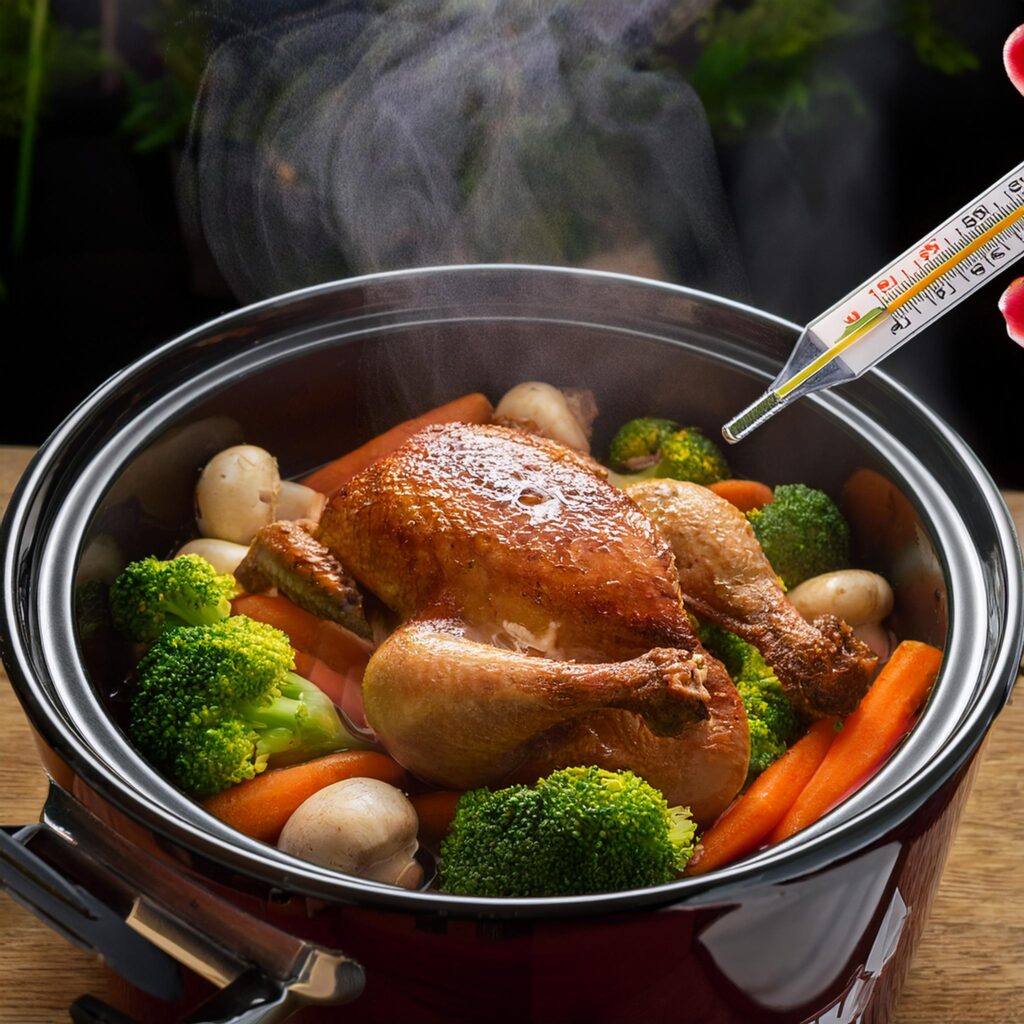
Is it better to cook chicken on high or low in a slow cooker
Whether you choose the high or low setting, these tips will help you achieve juicy, flavorful chicken while avoiding common slow-cooker pitfalls.
Avoiding Dryness
1. Add Sufficient Liquid:
Use broth, sauce, or water to keep chicken moist during cooking, especially for lean cuts like chicken breasts.
2. Use the Right Cut:
Chicken thighs or drumsticks retain moisture better than breasts and are less likely to dry out, especially when cooked on high.
3. Check Doneness Early:
Avoid overcooking by checking the chicken for doneness as it approaches the end of the cooking time.
Ensuring Food Safety
1. Use a Meat Thermometer:
Chicken must reach an internal temperature of 165°F (74°C) to be safe to eat. Check the thickest part of the meat to ensure it’s fully cooked.
2. Avoid Overcrowding:
Overloading the slow cooker can cause uneven cooking. Leave space for heat to circulate properly.
3. Handle Frozen Chicken Correctly:
If using frozen chicken, cook on high to reduce the time it spends in the danger zone (40°F–140°F or 4°C–60°C).
Enhancing Flavor
1. Season Generously:
Slow cooking can dilute seasonings, so be liberal with spices, herbs, and marinades to ensure bold flavors.
2. Sear the Chicken First:
For added depth of flavor, sear the chicken in a hot skillet before placing it in the slow cooker. This step caramelizes the exterior and locks in juices.
3. Layer Ingredients Thoughtfully:
Place chicken at the bottom of the slow cooker, where it will receive the most heat, and layer vegetables or sauces on top.
Checking for Doneness
- For bone-in chicken, check the thickest part near the bone to ensure it has reached 165°F (74°C).
- For shredded chicken, ensure the meat pulls apart easily with a fork.
By following these tips, you can maximize the quality of your slow-cooked chicken, whether you’re preparing a quick weeknight meal or a slow-simmered feast.
Frequently Asked Questions (FAQs) About Is it better to cook chicken on high or low in a slow cooker?
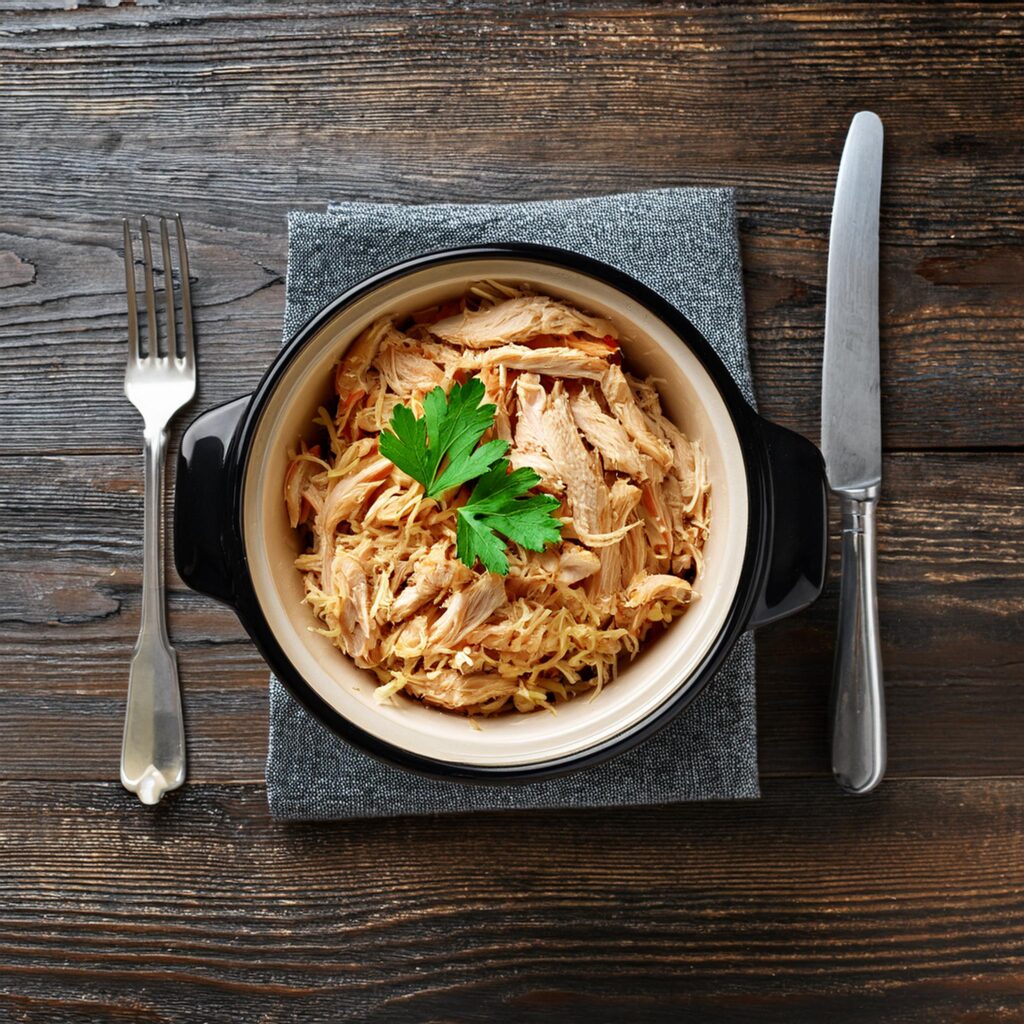
Is it better to slow cook chicken on low or high?
It is generally better to slow cook chicken on the low setting, as this allows the chicken to cook gradually, retaining moisture and becoming more tender. Cooking on high works well for recipes requiring shredded chicken or when you’re short on time, but there’s a higher risk of the meat drying out, especially with lean cuts like chicken breasts. For dishes with bone-in chicken or rich sauces, the low setting is ideal to enhance flavor and tenderness.
Is 4 hours on high the same as 8 hours on low?
While 4 hours on high and 8 hours on low can achieve similar results in terms of doneness, the textures and flavors differ. The low setting allows more time for flavors to meld and for connective tissues in the meat to break down, resulting in more tender and flavorful chicken. The high setting cooks food faster, which may be convenient, but it might not yield the same depth of flavor or tenderness.
Can you leave chicken in the crockpot on low for 8 hours?
Yes, you can leave chicken in the crockpot on low for 8 hours, especially when cooking bone-in pieces or thighs, which remain tender and juicy. For leaner cuts like chicken breasts, however, 8 hours on low may lead to dryness. Adding broth or sauce and monitoring the liquid level can help keep the chicken moist during extended cooking times.
Is meat more tender on low or high in a slow cooker?
Meat tends to be more tender when cooked on the low setting in a slow cooker. The slow, gentle heat breaks down connective tissues and collagen in the meat, resulting in a soft, melt-in-your-mouth texture. Cooking on high can also tenderize meat but is more likely to cause it to dry out or become tough, especially if not monitored carefully. For optimal tenderness, the low setting is the preferred option for most cuts of meat, including chicken.
Conclusion About Is it better to cook chicken on high or low in a slow cooker?
When cooking chicken in a slow cooker, the choice between the high and low settings depends on your priorities. For tender, juicy, and flavorful chicken, the low setting is the best option, especially for bone-in pieces or dishes that benefit from slow flavor development. If you’re short on time, the high setting can still yield delicious results, particularly for recipes requiring shredded chicken or when using boneless cuts.
Ultimately, understanding the characteristics of your ingredients and the goals of your recipe will guide you to the right setting. With proper techniques like adding sufficient liquid, using a meat thermometer, and avoiding overcooking, you can ensure perfectly cooked chicken every time, no matter the setting you choose. The key is balancing time, temperature, and preparation for a dish that satisfies every time.
For more delicious recipes, check out our All Recipes page! Don’t forget to follow us on Instagram, Pinterest, and Twitter to stay updated with our latest content!
